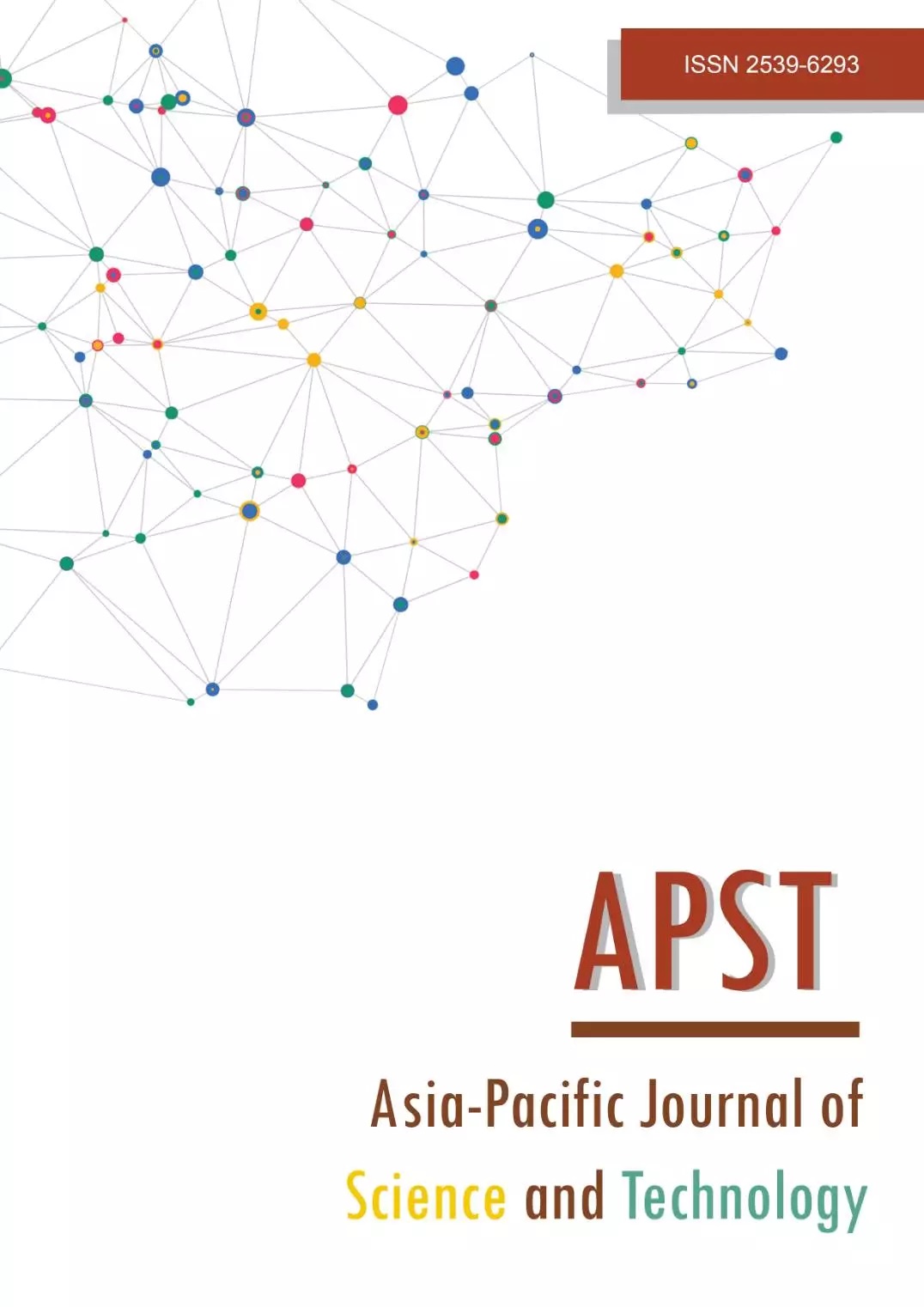The effect of the growth rate and life cycle of food industry companies on their profitability on the Tehran stock exchange
Main Article Content
Abstract
Increasing attention to the food industry and the entry of companies into the stock market is one of the most important factors influencing private sector investments and foreign investors, which will increase profitability, added value, and growth in the agricultural sector. This study attempts to examine the effect of growth rate of an asset (GRA), growth rate of sales (GRS), and growth rate of employment (GRE), financial constraints (liquidity (LIQ) and cash flow), and the company's life cycle on the profitability of 21 food industry companies listed the stock exchange from 2010 to 2019. The results show that the GRE, GRA, and GRS as corporate growth variables and cash flow variable as financial constraints have a positive and significant effect and LIQ as a financial constraint has a negative and significant effect on return on asset as a corporate profitability index. Meanwhile, the maturity stage of the company's life cycle compared to the growth stage as a Dummy variable has a positive and significant effect on the profitability of food industry companies. Therefore, if managers are looking for sustainable profits, they should also pay attention to the company's growth and its constituents.
Article Details

This work is licensed under a Creative Commons Attribution-NonCommercial-NoDerivatives 4.0 International License.
References
Grau A, Reig A. Operating leverage and profitability of SMEs: agri-food industry in Europe. Small Bus Econ. 2021;57(1):221-242.
Zimon G, Tarighi H. Effects of the COVID-19 global crisis on the working capital management policy: evidence from Poland. J Risk Financial Manag. 2021;14(4):169.
Zimon G, Zimon D. The impact of purchasing group on the profitability of companies operating in the renewable energy sector-the case of Poland. Energies. 2020;13(24):6588.
Zimon G. Issues of financial liquidity of small and medium-sized trading companies: a case study from Poland. J Entrep Sustain Issues. 2020;8(1):363-372.
Blazkova I, Dvoulety O. Investigating the differences in entrepreneurial success through the firm-specific factors Microeconomic evidence from the Czech food industry. J Entrep Emerg Econ. 2019;11(2):154-176.
Yoo S, Kim J. The dynamic relationship between growth and profitability under long-term recession: the case of Korean construction companies. Sustainablity. 2015;7(12):15982-15998.
Dickinson V. Cash flow patterns as a proxy for firm life cycle. Account Rev. 2011;86(6):1969-1994.
Steffens P, Davidsson P, Fitzsimmons J. Performance configurations over time: implications for growth and profit-oriented strategies. Entrep Theory Pract. 2009;33(1):125-148.
Karami GH, Omrani H. Life cycle effect on the value relevance of risk measures and performance measures. 2010;2(3):49-64.
Tehran. Securities and exchange organization of Iran, https://en.seo.ir/ [accessed 5 March 2021].
Tehran. Statistical Centre of Iran, https://www.amar.org.ir/ [accessed 5 March 2021].
Almasi M. Investigating the impact of privatization on the financial performance of companies listed in the Tehran stock exchange [thesis]. Shiraz: Shiraz University; 2002.
Omran M. Performance consequences of privatizing Egyptian state-owned enterprises: the effect post- privatization ownership structure on firm performance. Multinatl Financial J. 2004;8(1):73-114.
Saeedi P, Soflu JQ. Investigating the effect of transfer of ownership (privatization) on ROS and ROE, ROA of companies listed on the Tehran stock exchange. Strat Manag Res J. 2008;42(1):89-108.
Aghaei MA, Nowruz M. Bayat M. Mohabbatkhah M. Company life cycle, risk-taking, and shareholder sentiment: evidence from the Tehran stock exchange. JAA.2018;1(10);1-29.
Anthony H, Ramesh K. Association between accounting performance measures and stock prices: a test of the life cycle hypothesis. J Account Econ.1992;15(2):203-227.
Jang S, Park K. Inter-relationship between firm growth and profitability. Int J Hosp Manag. 2011;30:1027-1035.
Hajiha Z, Bahadori M. Comparative study of financial information reliability based on life cycle theory. J Manag Account. 2017;12(40):97-108.
Rostami V, Seyedi A. Salmanian L. Company life cycle and performance evaluation criteria. JAK. 2014;1(1):129-141.
Mendelson H. Organizational architecture and success in the information technology industry. Manag Sci. 2000;46:513-529.
Geroski P, Machin S. Think again: do innovating firms outperform non-innovators? Bus Strateg Rev. 2013;2:82-86.
Padachi K. Trends in working capital management and its impact on firms performance. Int Rev Bus Res. 2006;2:45-58.
Yolanda F, Beatriz C. Inter-relationship between firm growth and profitability in a context of economic crisis. J Bus Econ Manag. 2018;20(1):86-106.
Ebrahimpour M, Babanejad H, Ahangar MTT. Investigating the relationship between liquidity and financial leverage on the profitability of companies listed on the Tehran stock exchange (automotive and parts manufacturing, chemical and pharmaceutical industries), http://iranjoman.org/fckeditor/editor/filema
nager/connectors/aspx/Image/file/26-7.pdf [accessed 5 March 2021].
Piri P, Imani M, Allahordizadeh S. The effect of different life cycle periods on the profitability and growth of businesses. J Empir Account Res. 2011;2:49-66.
Pattitoni P, Petracci, B, Spisni M. Determinants of profitability in the EU-15 area. Appl Financial Econ. 2014;24:763-775.
Vahidi N, Dehghanpour M, Nasirizadeh H. Comparison between accounting profit and economic profit and its effect on optimal point of production. Eur Online J Nat Soc Sci. 2013;2(3):493-499.
Nezhad IA, Khodamipour A. Examining the relationship between profit and sales growth; evidence from Tehran stock exchange. International Conference on Management Economics and Social Sciences (ICEMSS); 2015 Apr 14-15; Barcelona, Spain. Warsaw: International Center of Academic Communication (ICOAC); 2015. p.1-16.
Cowling M. The growth-profit nexus. Small Bus Econ. 2004;22:1-9.
Fazzari SM, Hubbard RG, Petersen BC, Blinder AS, Poterba JM. Financing constraints and corporate investment. 1st ed. Maryland: Johns Hopkins University Press; 1988.
Maliki A, Najafi M, Baghzian A. Examining the life cycle of companies admitted to the Tehran stock exchange. Annual Conference on Business Management and Economics; 2015 Dec 18; Tehran, Iran. Tehran: Bom Saze Publishing; 2015. p.1-14.
Nasiri Y, Fallahpour M, Emsia A. Relationship between working capital management and profitability of companies listed on the Tehran stock exchange. 1st International Conference on Economics, Management, Accounting and Social Sciences; 2014 Jun, 21. Guilan, Iran. Guilan: New Science Series Journals; 2014, p.1-14.
Dahiyat A. Does liquidity and solvency affect banks' profitability? Evidence from listed banks in Jordan. Int J Acad Res Account Fin Manag Sci. 2016;6(1):35-40.
Kamiaei Y, Rostamabadi M. An overview of the dimensions of Tehran: Bom Saze Publishing; 2016. p.1-9.


